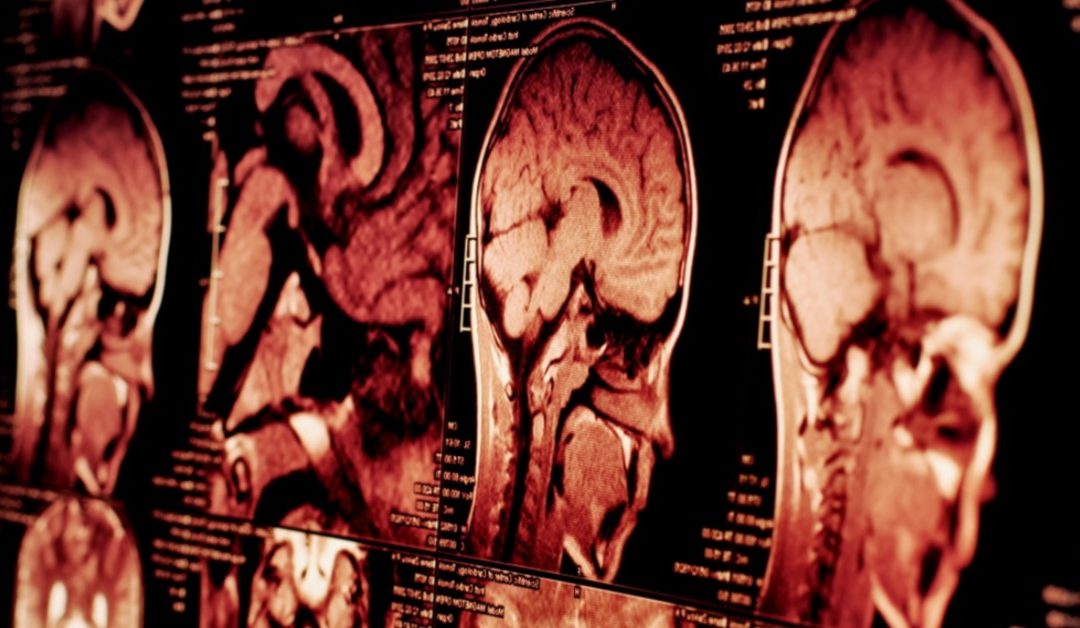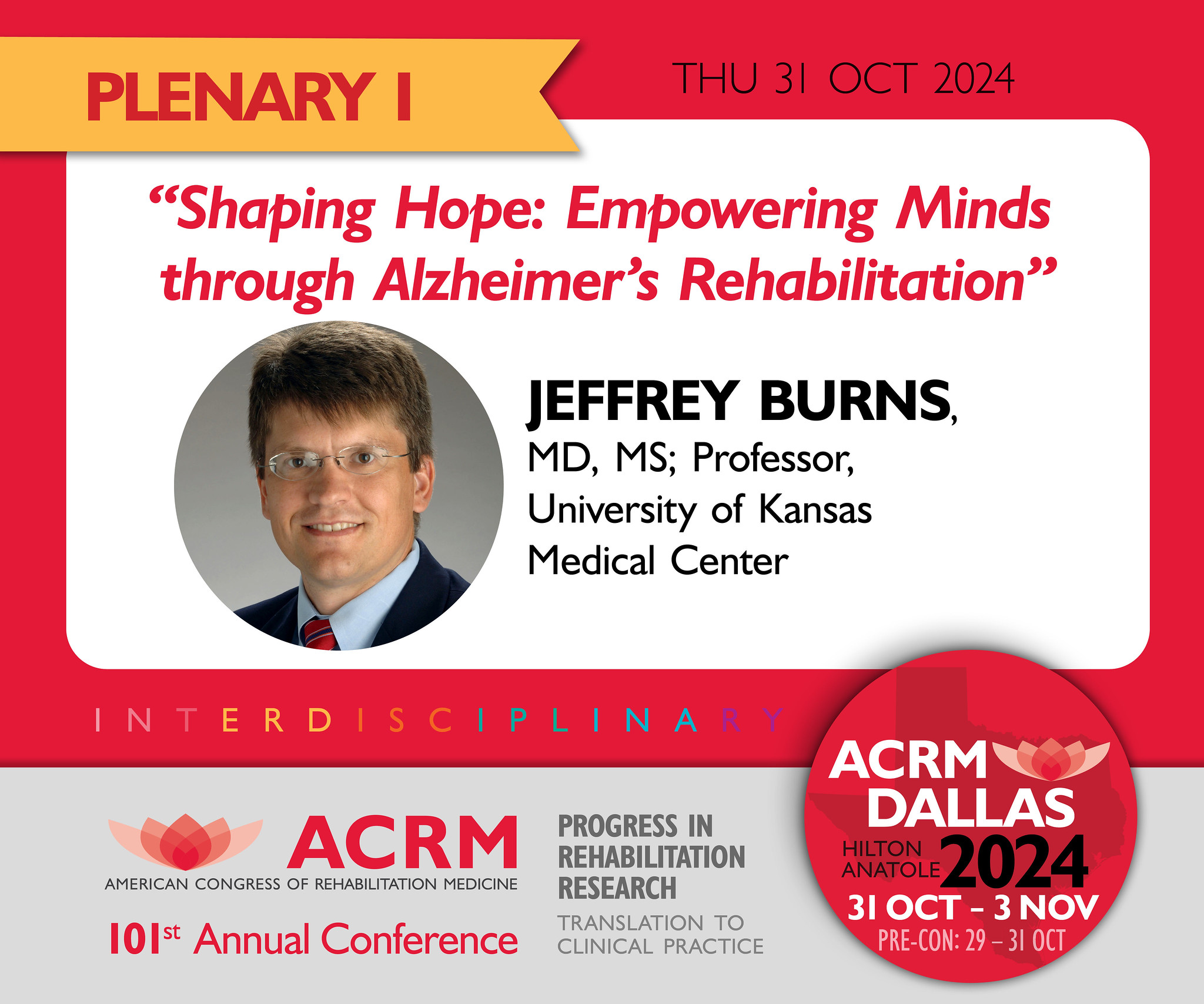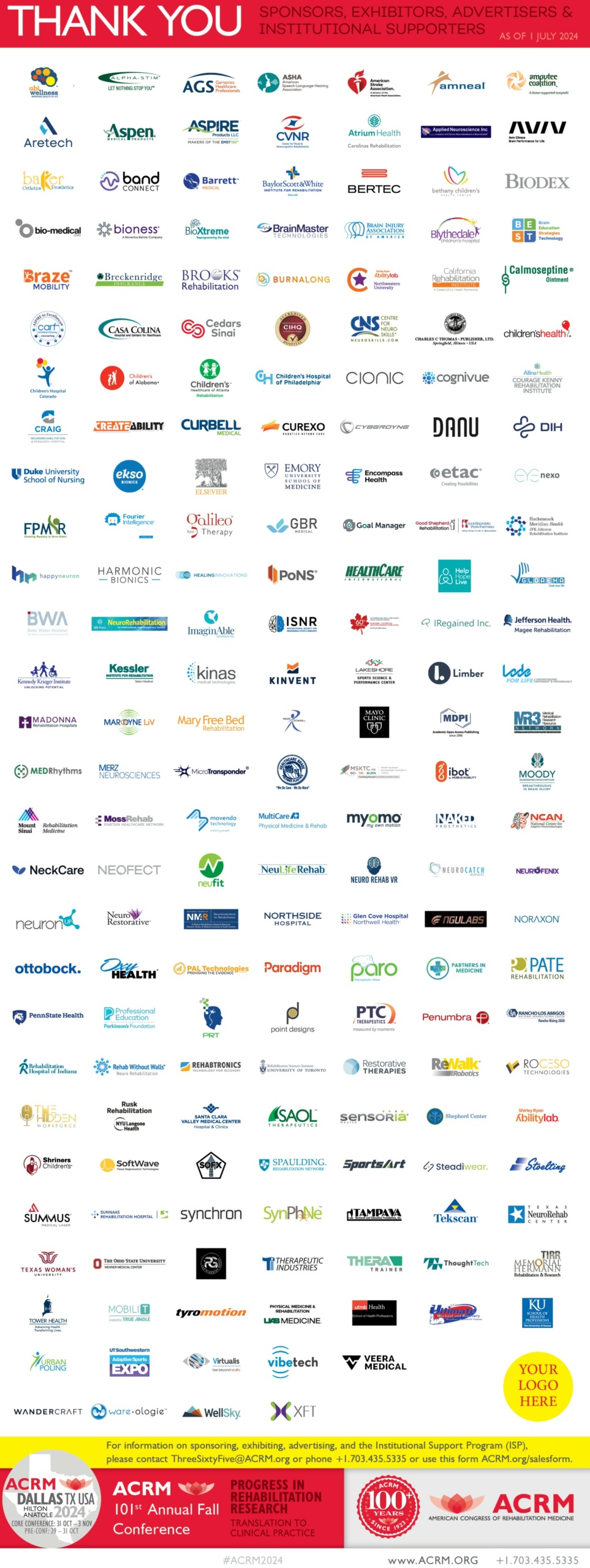Recovery from any injury is difficult — but recovery from a brain injury can be long, arduous, and never complete. We don’t say this to be pessimistic or downplay the role of rehabilitation research; we say this to emphasize the role of rehabilitation research!
As a care provider, hospital administrator, physician, nurse, or another practitioner in the health and wellness industry, you play a large role in the recovery of someone who has sustained a brain injury. If you’re interested in medical networking, rehabilitation conferences, continuing ed, or getting involved with your own rehabilitation research, then join ACRM and learn more about the Brain Injury Interdisciplinary Special Interest Group. The BI-ISIG is a wonderful way to get involved and launch your own rehabilitation research.
In today’s blog, we’re going to discuss what the recovery process typically looks like for brain injury patients. Whether you have done rehabilitation research on anything listed below to improve recovery or anything below inspires you in additional research, then we want to know. Join ACRM and join the BI-ISIG today to get started on improving the lives of others.
Stages After A Brain Injury
Swelling, bleeding, or changes in brain chemistry occur in the first few weeks following a brain injury. These actions can affect the current and future function of healthy brain tissue. During this time, the injured person may not show any signs of awareness. As brain chemistry and blood flow improve and swelling decreases, brain function usually will improve overall. Patients may even respond to stimuli during this time, such as a family member speaking.
During these early stages, common terms include:
- Coma: The injured person is unconscious and doesn’t respond to any stimuli in any way.
- Vegetative State: The injured person has sleep-wake cycles. They may briefly respond to stimuli.
- Minimally Conscious State: The injured person is partially conscious and can recognize and perhaps respond to stimuli.
Inconsistent behavior, agitation, irregular sleeping patterns, confusion, disorientation, and frustration are all common in these initial stages. Each of these responses tends to decrease as recovery improves.
Recovery Lengths
Fast recoveries from a traumatic brain injury tend to be around six months after the injury. In this time, improvements will be steady and obvious. This will continue until about two years after the injury, when recovery tends to slow down (though improvements can still be made).
Long-Term Impacts
Unfortunately, brain injury is still a relatively new area of treatment and research; this is where your rehabilitation research can be so instrumental. While brain scans and types of brain injuries can give indications of long-term effects, additional rehabilitation research is needed.
Get Involved With Rehabilitation Research Today
The BI-ISIG is a wonderful resource for medical networking, CE For nurses, CME for physicians, rehabilitation conferences, and, of course, rehabilitation research. Add to the discussion today and help cutting-edge, beneficial research be put into practice. Join ACRM today to contribute to the conversation and make a long-lasting effect on the recovery of brain injury patients.











